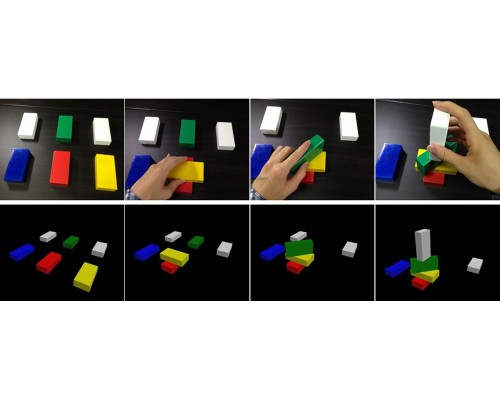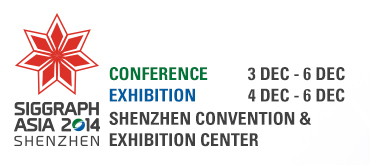Emerging Technologies
| 1 - Full Conference One Day |
|---|

A-Blocks: Recognizing and Assessing Child Building Processes during Play with Toy Blocks
A-Blocks is a novel building block device that enables detection and recognition of children’s actions and interactions when building with blocks. Each block embeds a wireless measurement device that includes acceleration, angular velocity, and geomagnetic sensors to measure a block’s spatial motion and posture during children’s play. By using combined sensor data, the system can estimate how to stack the blocks on each other by detecting surface collisions and recognize many fundamental play action patterns (e.g., moving, stacking standing, waving) with SVM. Unlike existing block-shaped devices with physical constraints on their connections, our solid and traditional-shaped block device supports flexible block play that could include more delicate motions reflecting a child’s inner state (e.g., learning stages, stress level, representation of an imagination). These benefits of analyzing children’s block play can be extended to allow for more enjoyable and interactive play, while social impacts include more constructive play.
Quantitative data received from constructing and/or breaking A-Blocks can be valuable for various assessment applications (e.g., play therapy, cognitive testing, and education). We conducted a user study where more than sixty children played with A-Blocks for further play therapy, and received positive feedback from the children and several therapists. Especially, the data obtained during children’s play can be visualized and shared with multiple therapists and/or medical doctors adequately, and this is expected to contribute to improve quality of future medical cares and can be applied to helping their diagnosis and treatments.
Future work includes automatic diagnosis systems for mental condition, interactive entertainment toy systems with dynamic, attractive, and augmented visual feedback, and so on.
Toshiki Hosoi
Research Institute of Electrical Communication, Tohoku University
Kazuki Takashima
Research Institute Of Electrical Communication, Tohoku University
Tomoaki Adachi
Department of Developmental and Clinical Studies, Miyagi Gakuin Women's University
Yuichi Itoh
Graduate School Of Information Science And Technology, Osaka University
Yoshifumi Kitamura
Research Institute Of Electrical Communication, Tohoku University
 English
English 
